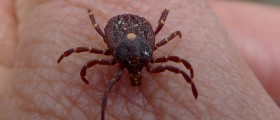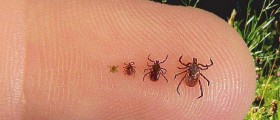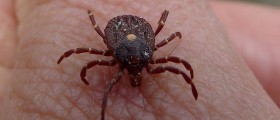
Lyme disease, also known as Lyme borreliosis, is an infectious disease caused by at least three different species of Borreila bacteria. In the United States, the main cause of Lyme disease is Borrelia burgdorferi sensu strict. Lyme disease is a tick-borne disease, which means it is transmitted by ticks. Ticks are external parasites living by hematophagy on the blood of mammals, birds, and occasionally reptiles and amphibians. Besides the Lyme disease, ticks are known vectors for Q fever, Colorado tick fever, tularemia, tick-borne relapsing fever, babesiosis, ehrlichiosis and tick-borne meningoencephalitis, as well as bovine anaplasmosis. The disease was named after the town of Lyme, in the USA state of Connecticut, where a great number of cases were discovered in 1970’s.
Transmission of Lyme disease
When scientists first found about this disease, they were puzzled since they could not understand what actually causes the symptoms. The real causative agent, Borrelia burgdoferi was not identified before 1981. Today we know that Borrelia is transmitted to humans by the bite of infected ticks. Tick bites often go unnoticed, but they are dangerous in very small percentage. It is estimated that only about 1% of recognized tick bites results in Lyme disease. Spreading the infection from human to human is extremely rare, even though it is demonstrated that in a small number of cases patients may become affected through sexual contact or breastfeeding. Transmission from mother to a child, across the placenta, has not been demonstrated.
Chronic Lyme disease
The term Chronic Lyme disease is often applied to patients who are suffering from the symptoms of untreated severe stage of Lyme disease. Their symptoms usually include arthritis, peripheral neuropathy and even encephalomyelitis.
However, this problematic term is also applied to some completely different sets of patients. For example, people may be diagnosed with Chronic Lyme disease if they had a disease in the past, and they have undergone the antibiotic treatment but some of their symptoms remain present. It is important to note that up to one third of Lyme disease patients, who have completed their treatment successfully, continue to have some sort of symptoms associated with this disease (fatigue, cognitive difficulties, sleep disturbance, etc). Small portion of these patients, about two percent, will continue having severe symptoms.
Another controversial use of this term is applied to the patients with completely nonspecific symptoms (like fatigue, for example) who have never been infected with Lyme disease in the past (or there is no objective evidence that they have ever been infected with Borrelia).
- www.cdc.gov/lyme/postlds/index.html
- www.cdc.gov/lyme/index.html
- Photo courtesy of Chris Booth by Flickr: www.flickr.com/photos/68944617@N00/3490267501/
















Your thoughts on this
Loading...